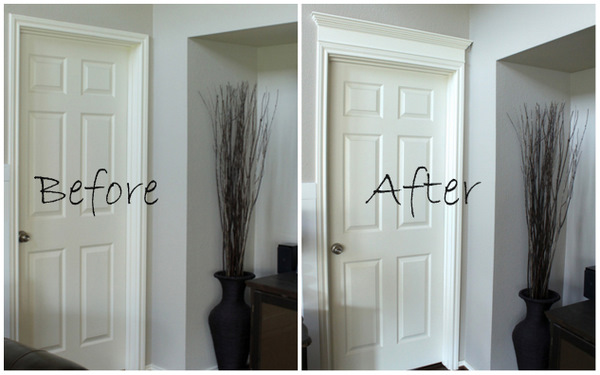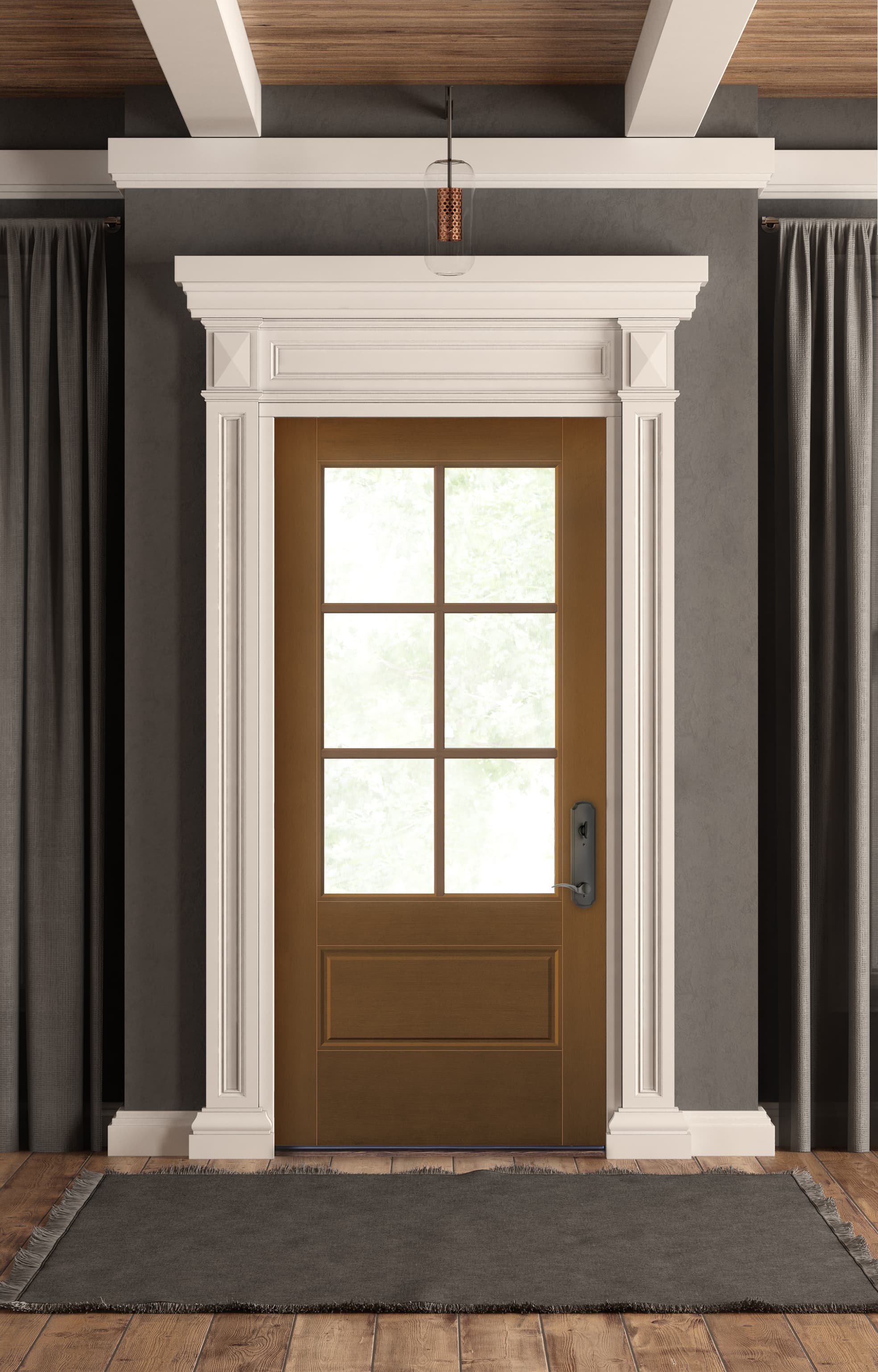Decorative molding is one of those often-overlooked elements of interior design that can make a profound difference in the aesthetics of your home. As someone who has spent countless weekends transforming spaces, I can attest to the power of moldings in elevating a room’s ambiance. Whether you’re aiming for a classic, modern, or eclectic look, decorative molding for doors can be a game-changer.
What is Decorative Molding?
Decorative molding refers to the ornamental strips of material applied to various surfaces, including walls, doors, and ceilings. Traditionally, moldings are crafted from wood, but modern variants include polyurethane, MDF (Medium Density Fiberboard), and polystyrene. Each material offers unique benefits and aesthetic contributions to home decor.
The Importance of Decorative Molding for Doors
Doors are often the focal points of a room, and decorative moldings can significantly enhance their visual appeal. They not only frame the door but also integrate style and character into your interior. Let’s explore why they matter:
- Aesthetic Enhancement: Moldings add depth and detail to plain doors, transforming them into elegant features of your home.
- Style Cohesion: By harmonizing door designs with other moldings in your space, you create a cohesive look throughout your home.
- Increased Property Value: Well-designed moldings can boost your home’s overall value, making it more appealing to potential buyers.

Types of Decorative Molding for Doors
There are various styles of decorative moldings, each catering to different taste preferences and architectural styles. Below, we’ll examine some popular types:
1. Crown Molding
Crown molding is traditionally installed where the wall meets the ceiling. However, it can also be used around doors for a more polished look.
Pros:
- Enhances the height of the room.
- Adds a classic touch.
Cons:
- Can be expensive depending on the material.
- Requires precise installation skills.

2. Casing
Casing surrounds doors and windows, providing a finished appearance. It comes in various styles, including modern, traditional, and colonial.
Pros:
- Defines the entryway.
- Available in numerous styles and finishes.
Cons:
- May require painting or staining.
- Can be bulky in smaller spaces.
3. Baseboard Molding
While primarily used at the bottom of walls, baseboard molding can accentuate doorframes, particularly in traditional designs.

4. Door Headers
Door headers are decorative trims placed above doorways, adding elegance and character, especially in taller door frames.
Materials Used in Decorative Molding
The material you choose for your decorative molding can affect both the aesthetic and functional quality of your doors. Below is a comparison of some common materials:

| Material | Cost | Durability | Maintenance | Best For |
|---|---|---|---|---|
| Wood | High | Very Durable | Requires Regular Care | Traditional Decor |
| MDF | Medium | Good | Low Maintenance | Modern/Affordable Options |
| Polyurethane | Medium | Water Resistant | Low Maintenance | All Styles |
| Polystyrene | Low | Less Durable | Easy to Clean | Budget-Friendly Solutions |
How to Choose the Right Decorative Molding
Choosing the right decorative molding can feel overwhelming with so many options available. Here are some tips I’ve learned over the years:

1. Consider Your Style
Identify your home’s overall design aesthetic. Are you leaning towards traditional, modern, or eclectic? The molding should complement your style.
2. Take Measurements
Measure the areas where you want to install the molding. It’s crucial to have accurate dimensions to ensure a seamless fit.

3. Budget Wisely
Determine your budget ahead of time. Decorative moldings can range significantly in price, so it’s important to find a balance between quality and affordability.
4. Consult a Professional
If you’re unsure about the selection or installation, consulting with an interior designer or contractor can help. Their expertise can guide you in making the best choice.

Installation Tips for Decorative Molding
Once you’ve chosen the perfect decorative molding, it’s time for installation. While some DIY enthusiasts might opt to tackle this on their own, here are some tips I’ve gathered:
1. Gather Your Tools
You’ll need a miter saw, nail gun, level, measuring tape, and caulk for a neat finish.
2. Pre-Cut Your Molding
Before installation, pre-cut your molding pieces to allow for better fitting while working. Mitered corners should be cut at a 45-degree angle for a professional look.
3. Secure with Adhesive and Nails
For stronger bonding, use wood adhesive along with nails. This dual approach ensures durability.
4. Finish the Edges
After installation, fill any gaps or nail holes with caulk or wood filler. A final coat of paint can help to seamlessly blend the molding with your walls.
Styles of Decorative Molding for Different Door Types
Different door types call for different molding styles. Below is how you can enhance the look of various doors:
1. Interior Wooden Doors
For classic wooden doors, opt for ornate crown molding or detailed casing.
2. Modern Doors
For sleek modern doors, consider simple yet bold casings or flat profiles that provide a minimalist look.
3. French Doors
French doors can be enhanced with slim and elegant moldings, particularly around the top to highlight their beauty.
4. Sliding Doors
For sliding doors, low-profile moldings work best, ensuring the door’s functionality is not obstructed.
Maintenance of Decorative Molding
To keep your decorative molding looking its best, regular maintenance is essential. Here are some tips:
1. Regular Dusting
Dust can accumulate on moldings, dulling their shine. A quick dusting with a microfiber cloth can keep them looking fresh.
2. Spot Cleaning
Use a damp cloth with a mild detergent to clean any stains or marks. Avoid abrasive cleaners that could damage the finish.
Pros and Cons of Decorative Molding
As with any design element, decorative molding comes with its advantages and disadvantages:
Pros:
- Adds visual interest to plain doors.
- Can elevate the overall decor of a room.
- Available in various styles to suit any aesthetic.
Cons:
- Can be costly, especially with high-end materials.
- Installation can be labor-intensive if done professionally.
- Some styles may require regular maintenance and touch-ups.
FAQs About Decorative Molding for Doors
1. What is the best material for decorative molding?
The best material depends on your style and budget. Wood offers a classic look, while MDF and polyurethane are more cost-effective and easier to maintain.
2. Can I install decorative molding myself?
Yes, if you have the right tools and skills. However, it may be beneficial to hire a professional for intricate designs or large spaces.
3. How do I clean decorative molding?
Dust regularly and use a mild detergent to clean any spots. Avoid harsh chemicals that may damage the finish.
4. Is decorative molding worth the investment?
Absolutely! Decorative molding can significantly enhance the beauty of your home and add value when done correctly.
Final Thoughts
Investing in decorative molding for your doors can be a transformative experience. From boosting your home’s aesthetics to increasing its value, the benefits are truly remarkable. As you venture into this exciting world of design, remember that the right style, materials, and installation can bring your creative vision to life. Happy decorating!